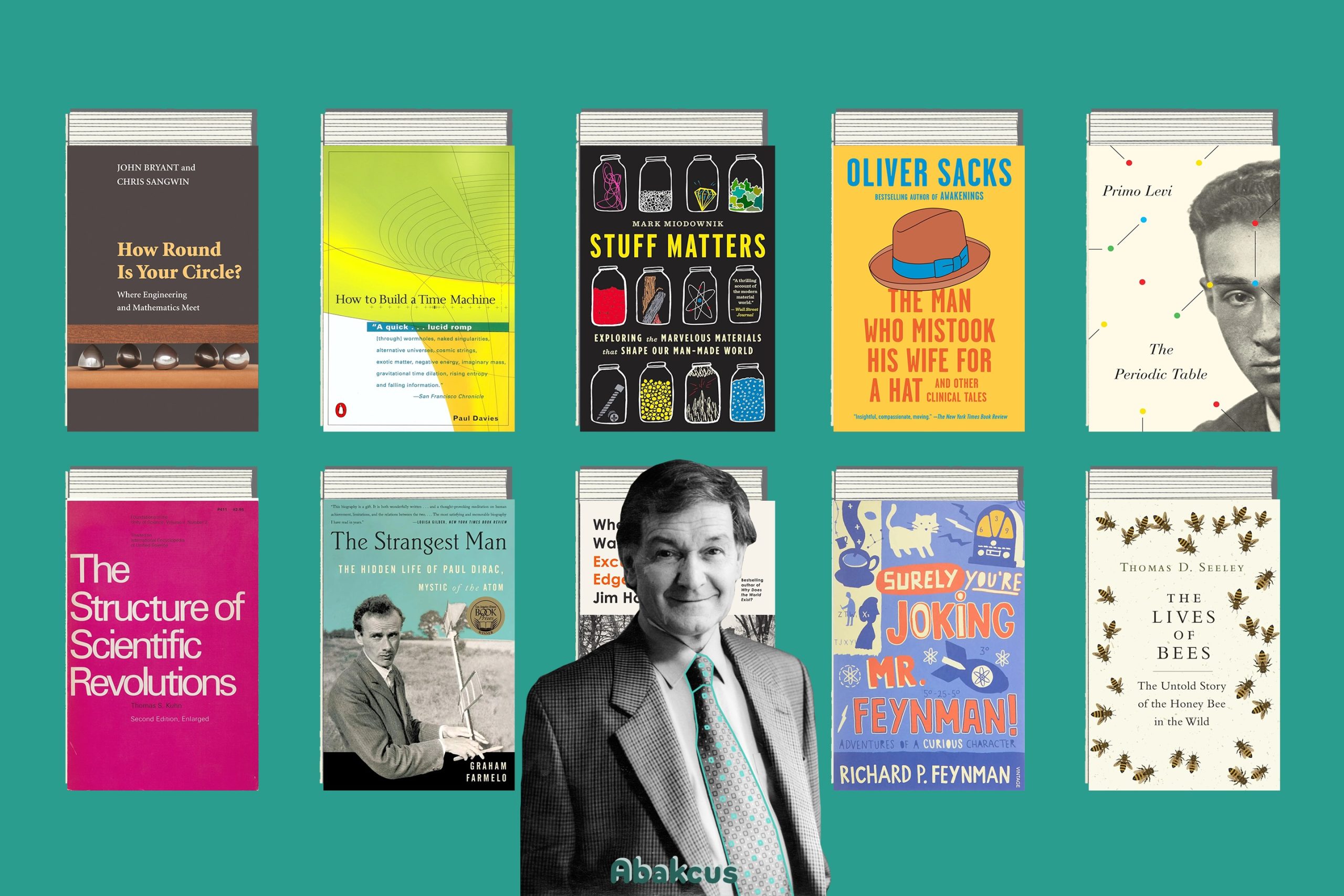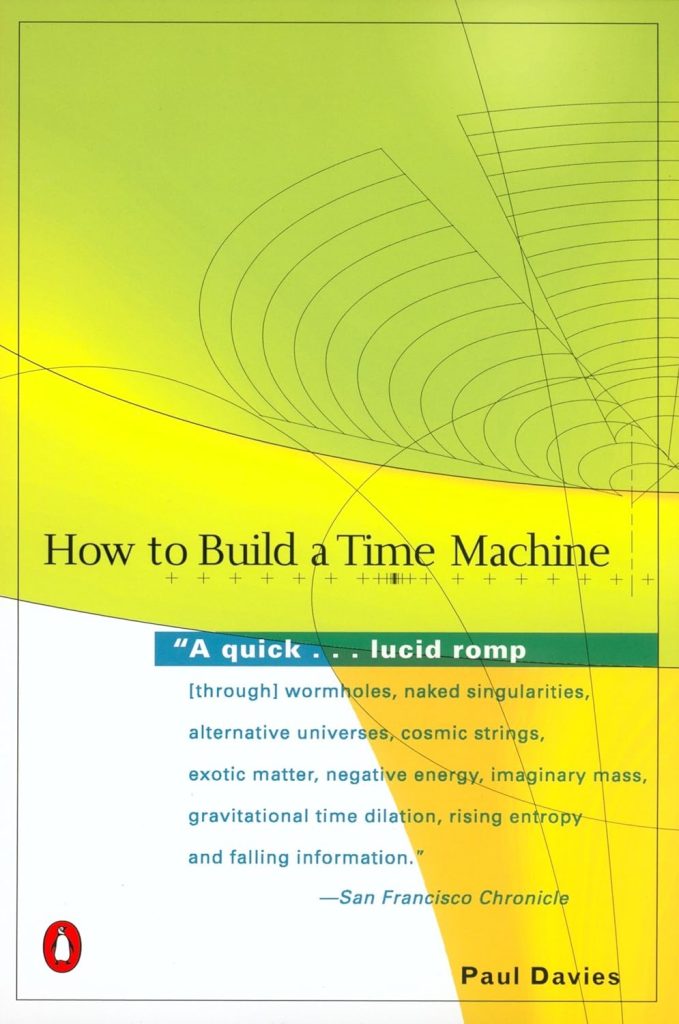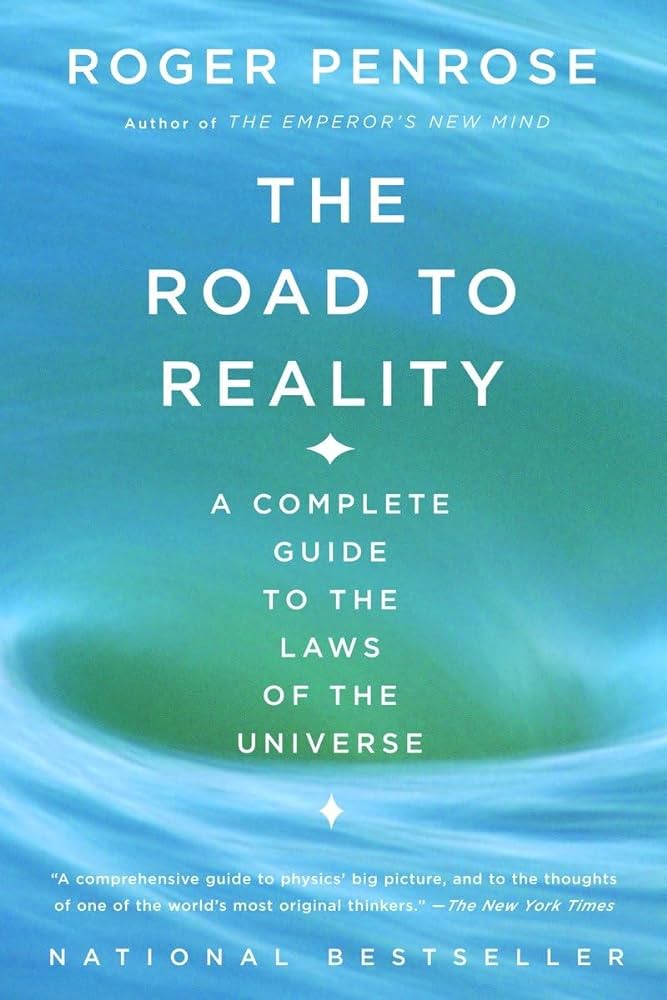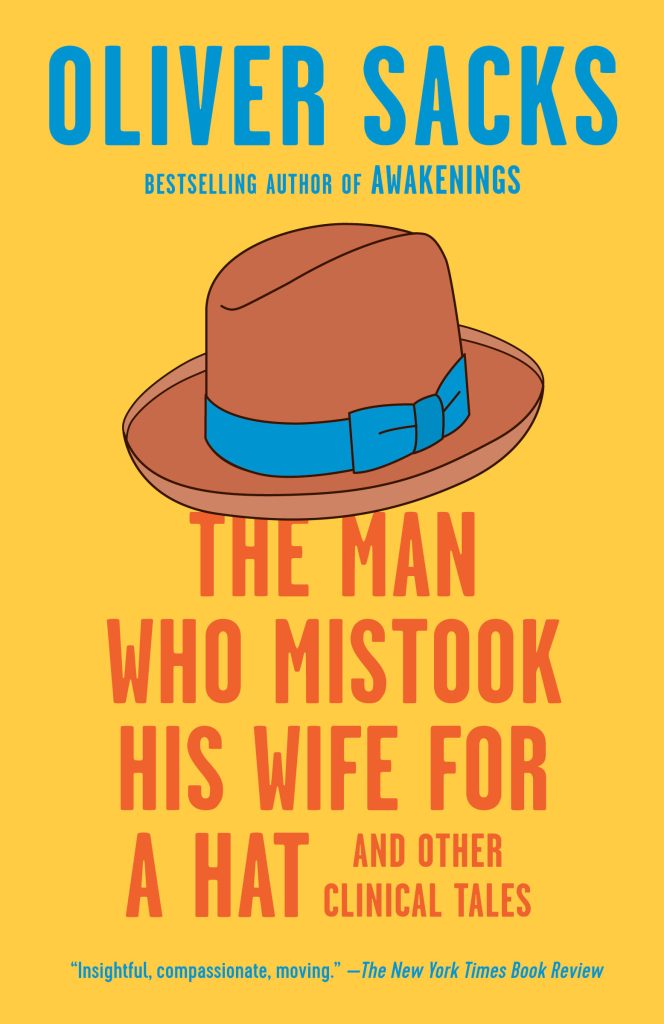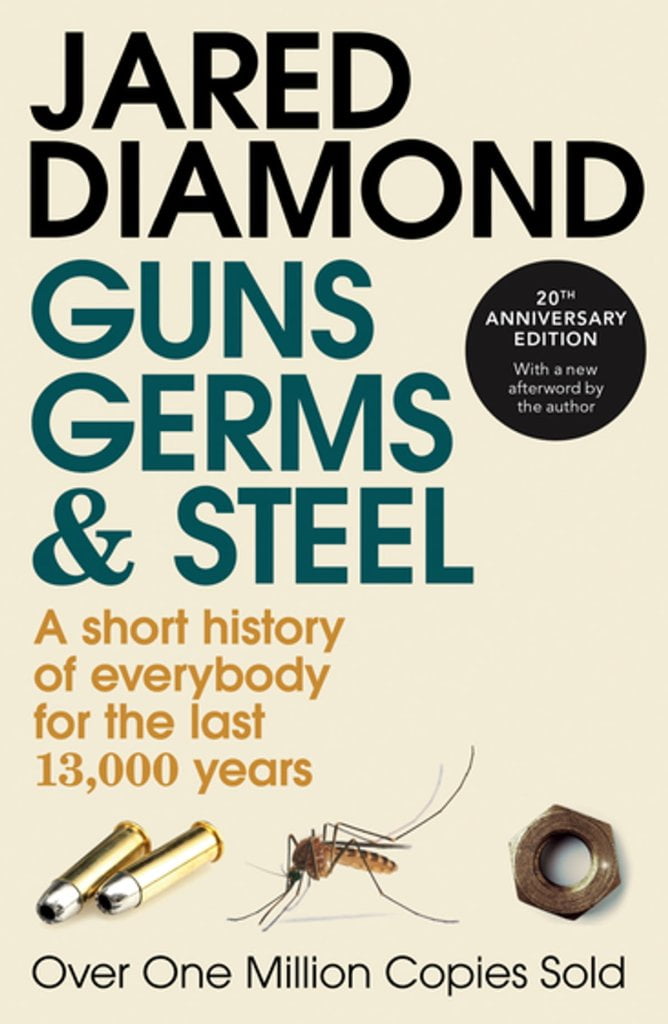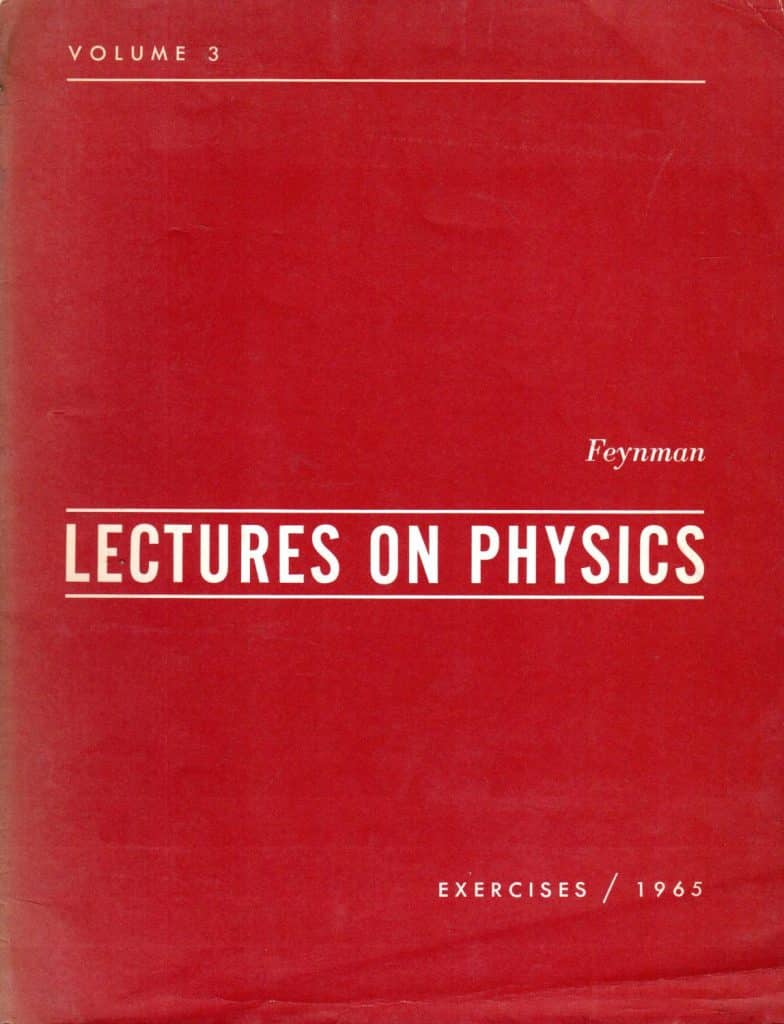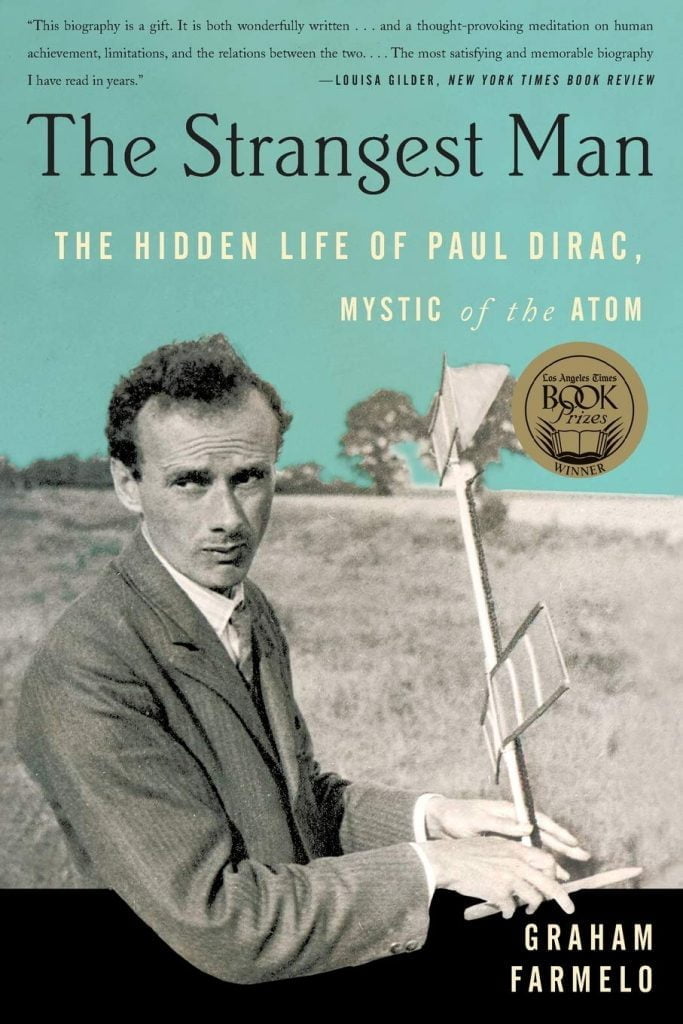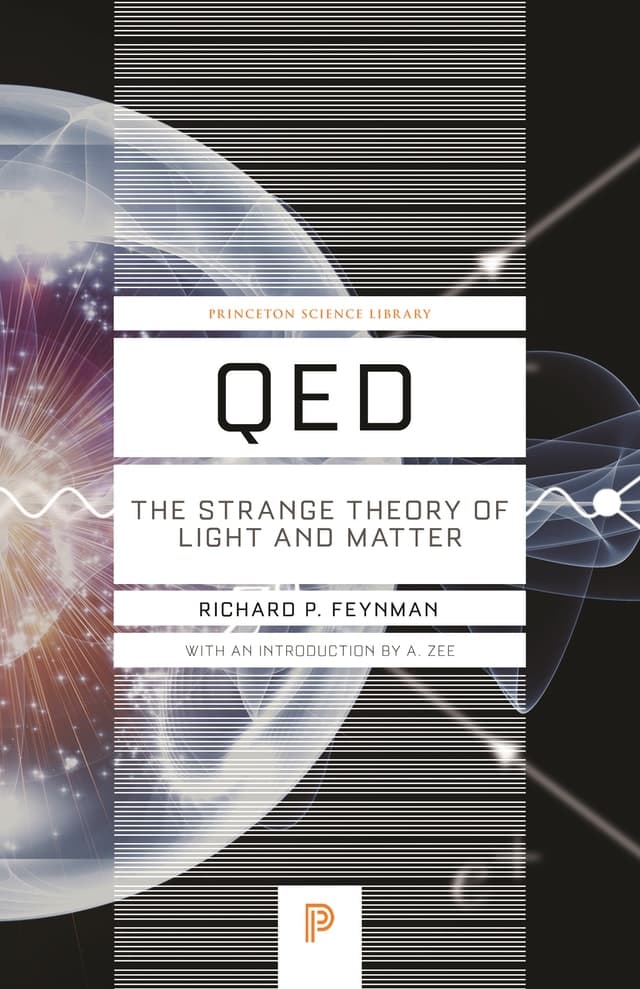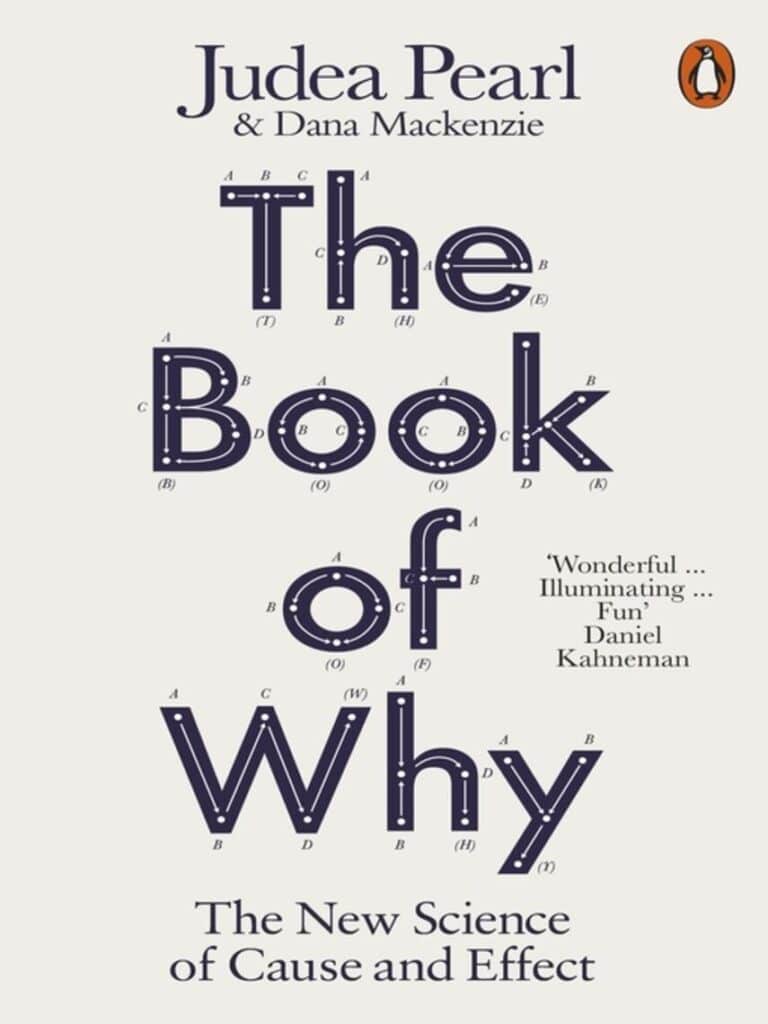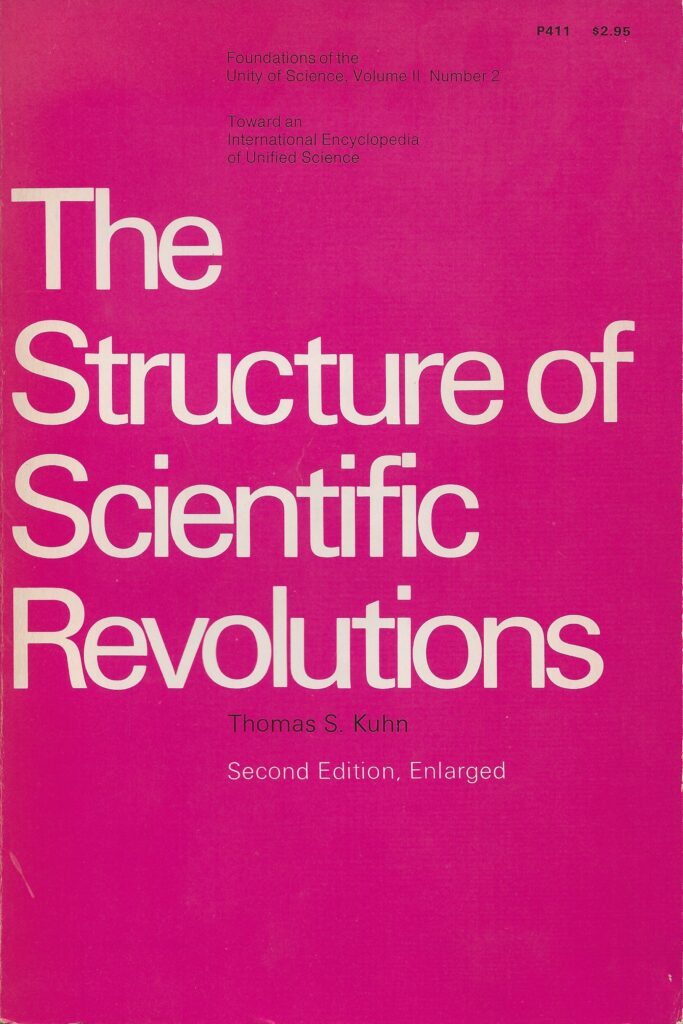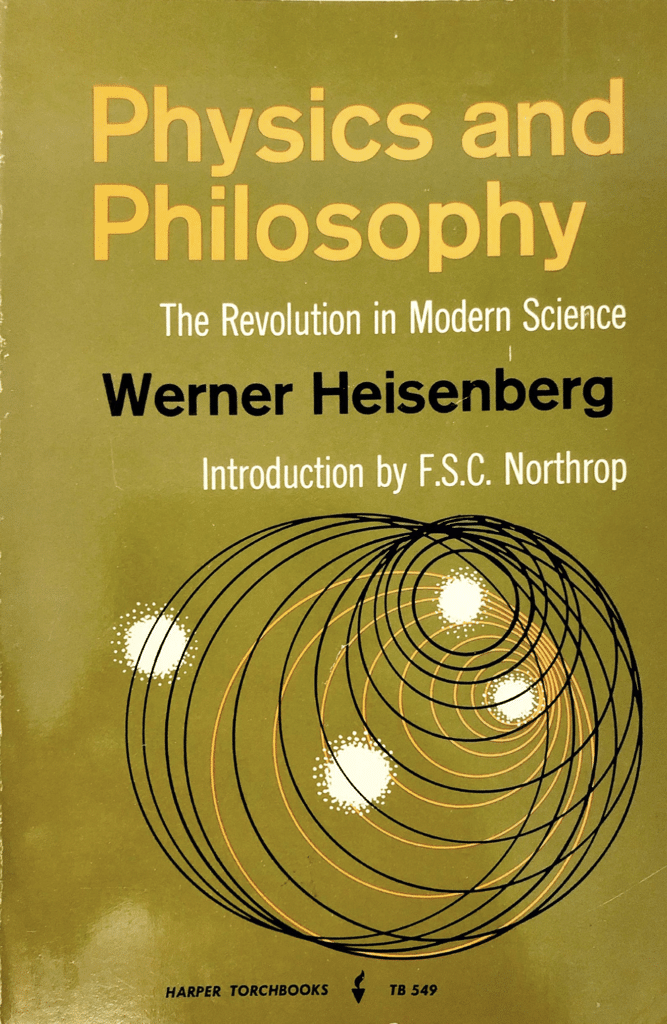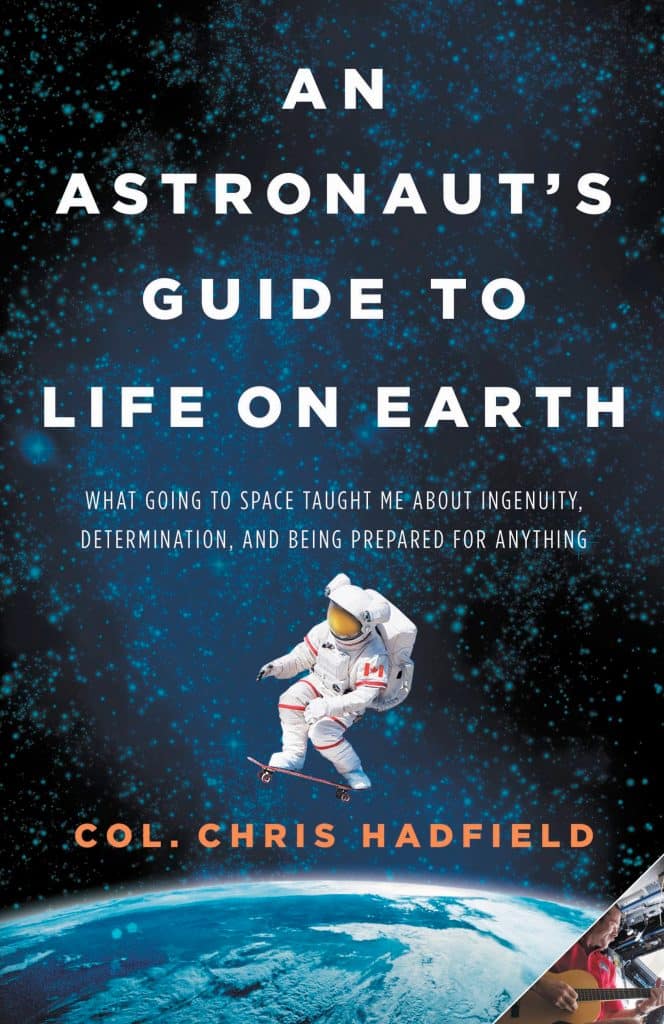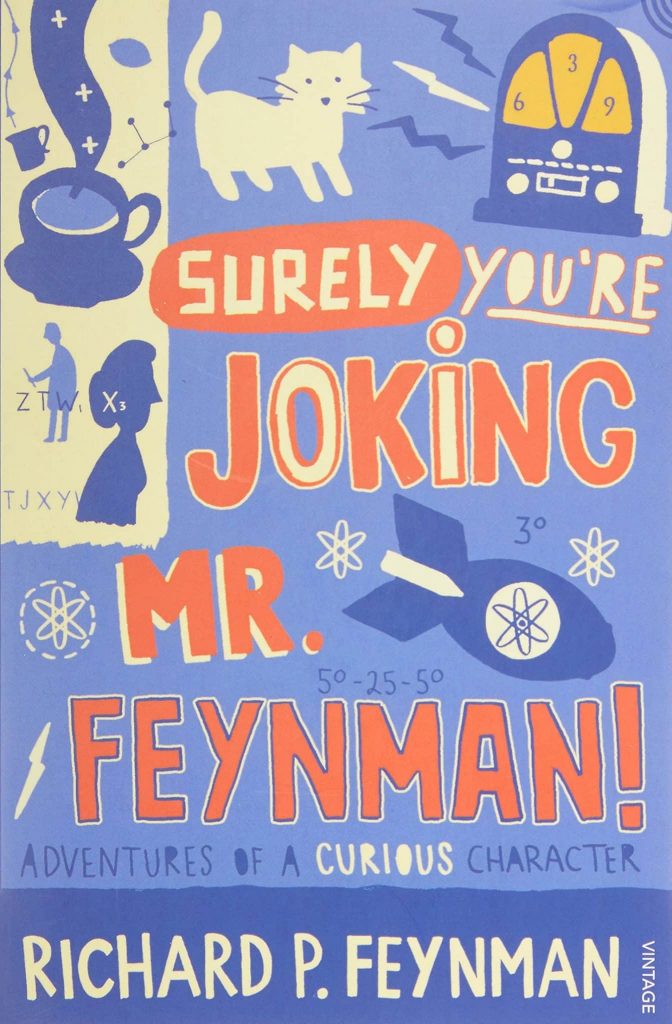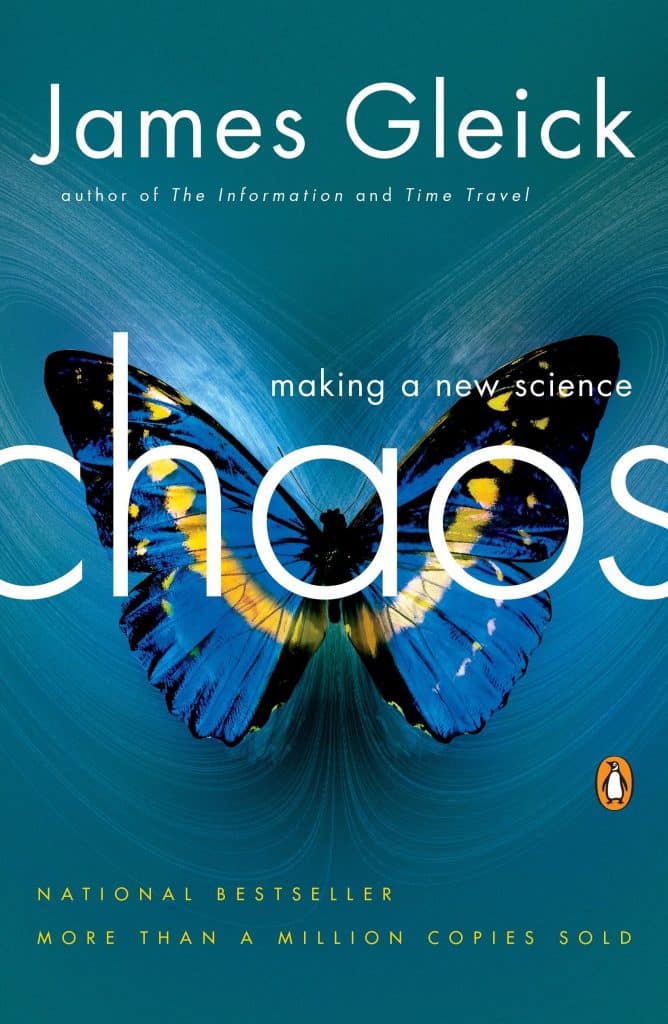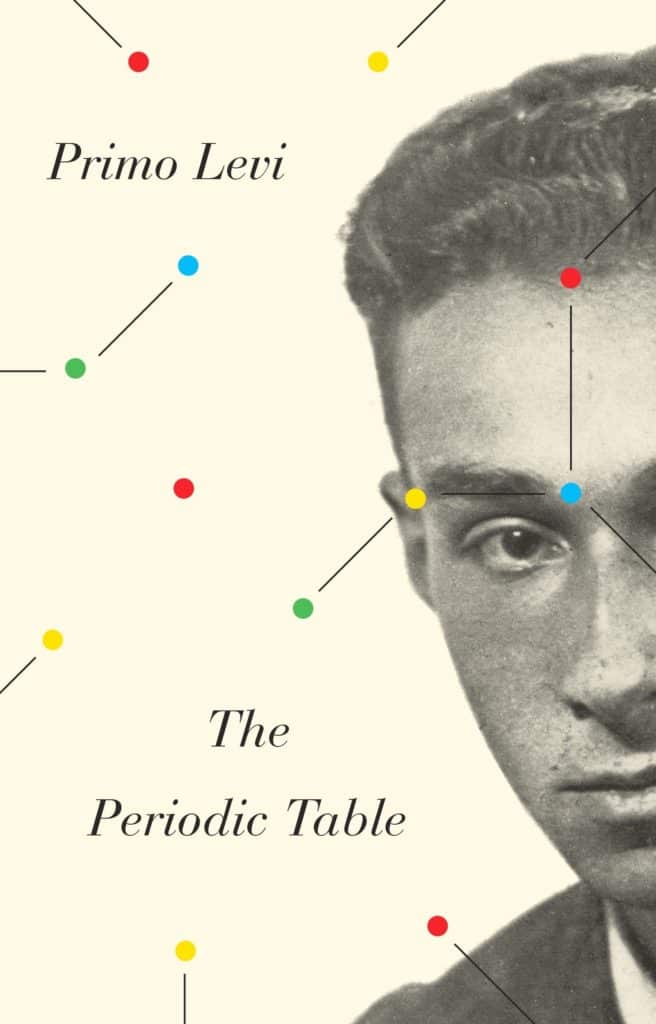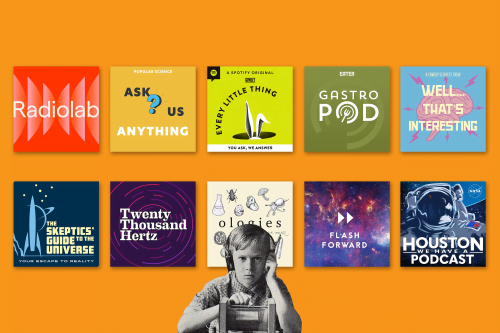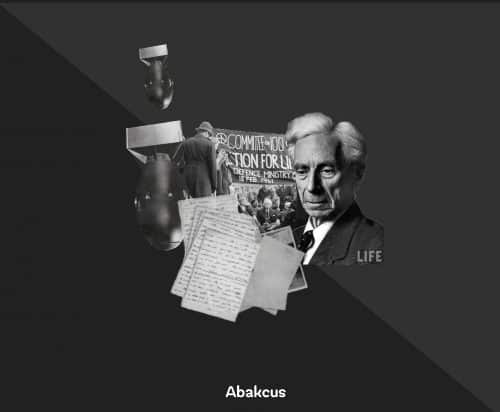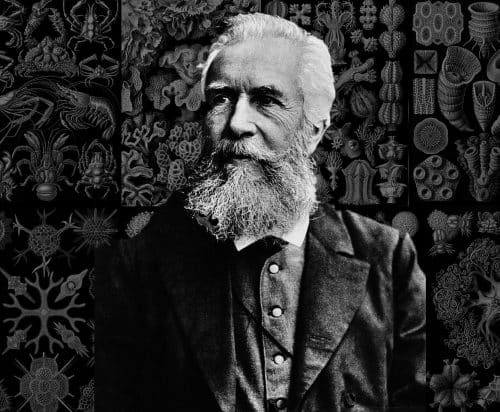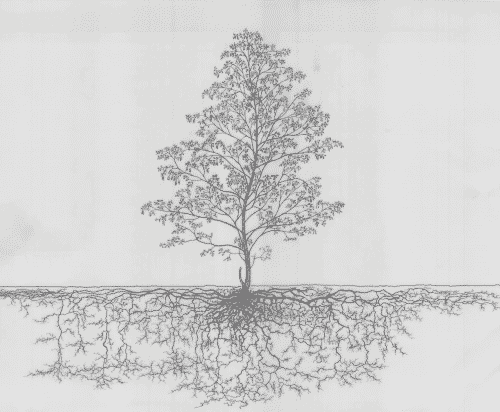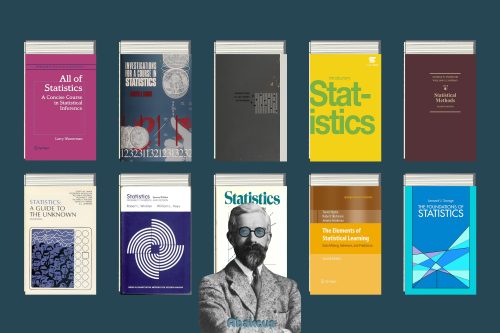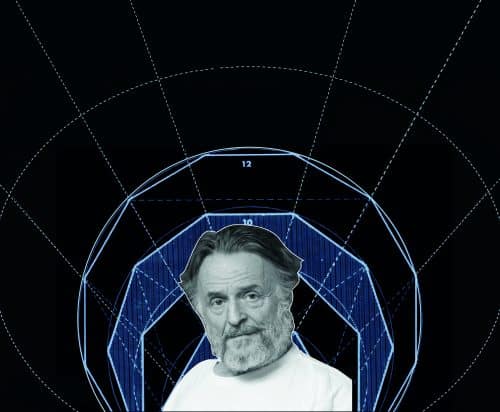A love for science often begins with a captivating book and the ones listed here have the power to ignite that spark. These science books are not only the highest-rated on Goodreads, but have also received critical acclaim, academic endorsement, and commercial success. From the mysteries of quantum physics to the intricate workings of the human anatomy, these works offer readers a profound understanding of the world around us. Their insightful content, compelling narratives, and groundbreaking research have firmly established them as vanguards in their respective fields.
Reading science books is an enriching experience that enhances our understanding of the world. It immerses us in the wonders of the universe, from the smallest particles to the vastness of the cosmos. These science books bridge the gap between complex scientific theories and our everyday experiences, allowing us to appreciate the intricate design of nature and technology. Moreover, they inspire us to ask questions, think critically, and nurture our curiosity. Whether you’re a scientist, a student, or simply a curious mind, science books are essential tools for cultivating a lifelong love for learning and discovery.
30+ Top Science Books for Science Lovers

This science books list includes absolute classics of scientific literature as well as modern masterpieces. All of these science books are highly recommended for science aficionados and inquisitive minds alike. I have curated this list from top-rated science books on Goodreads and Amazon, and have also provided their relative ratings for comparison purposes. Whether it’s a timeless classic or a contemporary gem, each book on this list has the power to take you on a journey of scientific exploration and discovery.
If you’re a beekeeper or just fascinated by these incredible creatures, I highly recommend this outstanding book, The Lives of Bees.
Written by the esteemed researcher and writer, Seeley, who is an expert in the field of honey bees, The Lives of Bees is a treasure trove of knowledge. After years of study and research, Seeley delivers valuable insights into the genetics, health, and natural habits of wild honey bees.
By contrasting standard beekeeping practices with the behaviors of successful wild colonies, Seeley provides scientific support for alternative beekeeping methods. His practical suggestions can help beekeepers adapt their practices for the benefit of their colonies and their own beekeeping endeavors.
By following Seeley’s advice, beekeepers can raise stronger colonies that are more equipped to overcome the challenges of domestic beekeeping.
If you’re ready to delve into the untold story of honey bees in the wild and revolutionize your beekeeping practices, The Lives of Bees is a must-read. Get ready to be amazed by the fascinating lives of bees.
Imagine being able to time travel. Is it really possible? Well, according to renowned theoretical physicist Dr. Davies, it might just be! In his captivating book, How to Build a Time Machine, he explores the fascinating world of time travel and reveals the secrets behind this fourth dimension.
Forget everything you thought you knew about time machines. Dr. Davies introduces a whole new concept that will blow your mind. He draws inspiration from Einstein’s special theory of relativity and delves into the mind-bending idea that time and space are elastic. Through this unique perspective, he proves that time travel is not just a pipe dream, but a real possibility.
So, how do we navigate through time? Dr. Davies unveils his ingenious ideas. To journey into the future, all we need is a little help from gravity and a spaceship that can reach incredible speeds. It sounds like something out of a science fiction novel, but Dr. Davies explains the scientific principles behind it all.
But what about traveling to the past? This is where things get even more fascinating. Dr. Davies takes us on a deep dive into the concept of wormholes – portals that connect different points in space and time. Through meticulous explanations and captivating diagrams, he shows us the intricate components needed to construct a wormhole.
Of course, not everything is as straightforward as it seems. Dr. Davies presents some mind-boggling propositions that might challenge our beliefs. For example, he suggests the existence of exotic matter with antigravitational properties, which is crucial for creating a wormhole. It’s a concept that pushes the boundaries of our understanding and leaves us questioning the nature of reality.
While Dr. Davies focuses primarily on wormholes, some readers might yearn for a broader exploration of time travel technology. Nonetheless, his thought-provoking insights into the paradoxes of time travel and the physical laws that govern it make for an accessible and engaging read.
So put on your theoretical physicist hat and get ready to embark on an extraordinary adventure through time with How to Build a Time Machine. Who knows, by the end of How to Build a Time Machine, you might just find yourself questioning the limitations of time and space.
Get ready to embark on a journey through the incredible world of materials that shape our everyday lives. In “Stuff Matters: Exploring the Marvelous Materials That Shape Our Man-Made World,” Mark Miodownik takes us on a captivating exploration. From the wonders of concrete to the secrets of chocolate-making, Stuff Matters uncovers the fascinating stories behind the materials we often take for granted.
Miodownik, a professor of materials and society, goes beyond the technical aspects and delves into the profound impact of each material on our society. Take concrete, for example. Not only does it provide us with shelter, but it also opens the doors to art, recreation, and government. Just look at what the Romans achieved with their rudimentary form of concrete. Contrast that with the challenges faced by Third World inhabitants who lack access to this life-changing material.
Through engaging chapter headings like “Delicious,” “Marvelous,” and “Trusted,” Miodownik showcases his love and admiration for these materials. With his witty and humorous writing style, he brings complex scientific concepts to life, making them accessible to all readers. Whether you’re interested in the science behind glass transparency or the magic of the Maillard reaction in chocolate-making, Stuff Matters has something for everyone.
While the book is a captivating read, there is one chapter that misses the mark. Miodownik chose to present his insights on plastic in the form of a screenplay, which may be confusing for some readers. However, this minor flaw does not detract from the overall enjoyment of the book.
If you’ve ever questioned why certain metals bend while others stay rigid, why razor blades dull, or why carbon’s crystal structure is so unique, this book is a must-read. It will not only satisfy your curiosity but also provide you with a deeper understanding and appreciation for the materials that surround us every day. So dive into the world of “Stuff Matters” and prepare to be amazed by the marvelous materials that shape our man-made world.
Are you ready for an exciting journey through the laws of the universe? The Road to Reality is the perfect companion for anyone who wants to dive deep into scientific principles. What sets this book apart is its unique approach of presenting these principles in chronological order, allowing you to witness the evolution of knowledge.
But don’t worry, this isn’t just a dry textbook. The author spices things up by sprinkling in fascinating historical facts about scientists. It’s like taking a sip of refreshing knowledge with a side of captivating stories.
Now, let’s address the elephant in the room. Learning science chronologically may not always be the easiest route. Some older concepts can be more challenging to grasp, and it might be better for beginners to start with more modern techniques before tackling traditional ones. Additionally, the book requires a certain level of subject continuity that may not always be present in a strictly chronological order. But fear not, if you’re already familiar with these principles, you’re in for a treat. Seeing them unfold across a broad timeline will give you a whole new perspective on the universe.
Speaking of challenges, let’s talk about the math section. It can be a bit tough to digest, especially for those not well-versed in the subject. Luckily, there are other books like Thomas’ Calculus or Kreyzig’s Advanced Engineering Mathematics that offer clearer and more accessible explanations.
So, are you ready to embark on a mind-bending adventure through the universe? The Road to Reality awaits, ready to expand your knowledge and leave you with a newfound appreciation for the laws that govern our world.
Do you ever feel like you need more sleep than the average person? Well, you’re not alone. After delving into Matthew Walker’s eye-opening book, Why We Sleep, I’m convinced that we’re all sleep-deprived. Despite spending a solid third of our lives snoozing, we still don’t fully grasp the wonders of sleep. Luckily, this book unravels the mysteries and highlights the crucial role it plays in our overall well-being.
In the first section, Walker explores the essence of sleep. He uncovers the incredible benefits it brings, from sharpening our memory to enhancing problem-solving skills. He delves into the captivating world of chronotypes, shedding light on whether we’re morning larks or night owls. And for parents, like myself, with teenagers in need of extra shut-eye, Walker enlightens us on the importance of morning sleep for adolescents. It aids their growth, memory retention, and learning. Not to mention, sleep is essential for our immune system and mental health. Lack of sleep can even contribute to depression, anxiety, and stress.
Walker goes further to explain the different stages of sleep. He breaks down the significance of REM and NREM sleep and how they work together to promote our well-being. With various wearable devices available to track our sleep phases (although not as accurately as the Sleep Lab at UC Berkeley), it’s fascinating to monitor the type of sleep we’re getting and understand its impact on our bodies and minds.
One aspect that stood out to me was the consequences of sleep deprivation. This section had me on edge, but there were moments of humor amidst the horror. For instance, Walker reveals that those macho men who boast about only sleeping a few hours a night might have reduced testosterone levels and smaller testicles. Additionally, he warns us that being awake for 19 hours and then getting behind the wheel is comparable to driving under the influence of alcohol. The terrifying truth is that chronic sleep deprivation can lead to obesity, heart disease, and diabetes.
I was also intrigued to learn about the effects of sleeping pills on our sleep patterns. Let’s just say it’s not pleasant news.
Why We Sleep is exceptionally well-written, and after listening to Matthew Walker on various podcasts and interviews, I’m even more impressed by his expertise and dedication to sleep research. I’ve already given copies of Why We Sleep to two people, and I highly recommend it to anyone looking to optimize their life.
Rachel Carson captivated the world with her book, Silent Spring, which became a bestseller in 1951. It was a significant milestone in my own science education. However, if you were to read it today, you would find some outdated ideas. Nevertheless, Carson’s book was a catalyst for future oceanographers and marine biologists, inspiring them to explore and uncover the mysteries of the deep ocean.
Silent Spring, published in 1962 while Carson battled cancer, is the book that truly shaped the conservation movement and ignited global awareness of ecological systems. It heralded a new era of environmental activism. The impact of Silent Spring was immediate and far-reaching. Carson’s contribution to the world was recognized with a posthumous presidential medal and her face on a US postage stamp. However, her groundbreaking work also attracted fierce opposition from the chemical industry and baseless accusations of her being a communist.
But what about Silent Spring today?
The book is a masterpiece of clear and authoritative writing. Carson’s poetic language brings vivid imagery to scientific explanations. For instance, she compares pesticide residues in drainage systems to the sight and sound of waterfowl gracefully flying across an evening sky. She personifies soil bacteria and fungi as tireless creatures, toiling away diligently.
Carson’s use of emotion and imagery is strikingly effective. She presents tragic events without overt commentary, allowing the reader to understand the gravity of the situation. For example, she recounts how two children in Florida found an empty bag, unknowingly contaminated with a deadly insecticide. Both children died, while three others fell ill. With this simple story, Carson imparts the devastating consequences of indiscriminate pesticide use.
Silent Spring is not just a compelling narrative, but also an educational text. It introduced groundbreaking ideas about the food chain, chemical residues, ecological interdependence, and the delicate balance of life on Earth. Carson exposes the dangers of uncontrolled chemical use and questions the priorities of a capitalist society that prioritizes profits over health and environmental well-being.
Carson’s book continues to have a profound impact. Many of the dangerous chemicals she highlighted have been banned or heavily regulated. Environmental monitoring initiatives have emerged worldwide. Damaged ecosystems have been rejuvenated, and citizens’ groups and environmental advocates are fighting for change. Governments have implemented environmental legislation and oversight.
While some may argue that the world overreacted to Carson’s warnings, the positive changes that Silent Spring has brought about cannot be denied. Carson remains a visionary environmentalist who challenged the status quo and opened our eyes to the consequences of our actions. Silent Spring is a call to action, urging us to protect our planet for future generations.
Looking for a unique and intriguing read? Look no further than “Stiff“! This book is perfect for those with a scientific curiosity and an appreciation for the strange and quirky aspects of human behavior. However, I must warn you, if you’re even remotely squeamish or too young, this may not be the book for you.
In “Stiff“, author Mary Roach takes us on a wild ride through the explicit and factual world of cadavers. She effortlessly explains complex scientific concepts in a way that anyone can understand, making it a great read for both experts and laymen.
While I thoroughly enjoyed this book, there were moments when I had to put it down and take a breather. Not because I was grossed out, but because the incredible details about historical and current scientific research on anatomy, dying, and decomposition were simply mind-blowing. Roach uncovers a variety of methods and practices involving dead bodies that will leave you speechless.
Roach’s writing style is both witty and informative. She uses dry and slapstick humor to discuss the centuries-old practices of studying corpses, from early-stage proto-science to modern-day experiments. She even travels the world to explore how corpses and body parts are used in medical, commercial, and environmental labs. The book delves into the folk beliefs and practices surrounding dead bodies, some of which involve practices we would now label as cannibalism. Yet, through it all, Roach’s jokes hit the mark, perfectly capturing the silliness and bizarre nature of our obsession with dead bodies.
You’ll be amazed to learn just how extensively corpses have been used in commercial research. Car manufacturers use them to test the impact of collisions, medical schools rely on them for education, and even investigators of plane crashes turn to cadavers for insights. Roach also uncovers the role of corpses in military studies, sports equipment design, and the training of cadaver dogs. And let’s not forget the unsettling world of illegal activities involving dead bodies, like necrophilia.
But that’s not all. Roach also delves into the strange experiments conducted by early scientists and doctors. They sought answers to questions like where the soul resides and whether guillotined heads continue to live for a few seconds after being severed. And yes, people actually made products like wallets and handbags from body parts.
Prepare to have your mind blown even further with Roach’s exploration of early crackpot medicines. Believe it or not, human and animal waste, along with other bodily fluids like spit, menstrual blood, and urine, were key ingredients in these supposed remedies. Yet, the most common component in these strange concoctions was liquor. People eagerly consumed these elixirs despite their lack of effectiveness.
Intrigued? If you’ve managed to make it this far without feeling queasy, “Stiff” is an absolute must-read!
The book that changed my perspective on Biomedical Sciences is The Man Who Mistook His Wife for a Hat by Oliver Sacks. In this captivating book, Sacks shares a collection of fascinating case studies from his career as a neurologist.
One unforgettable patient, Mr P, suffers from visual agnosia, making it impossible for him to recognize objects by sight alone. He can’t even tell the difference between his own wife and a hat! But, if he touches an object or hears a sound, he instantly knows what it is. This case made me realize that our senses are connected to different parts of the brain.
Another intriguing case in the book introduces us to Jimmie G, who has Korsakoff’s syndrome and can’t form new memories. He firmly believes he is still a soldier in the Second World War because he can’t recall anything that happened after that time. This study sheds light on the distinction between long and short term memory and the process of creating new memories.
What sets The Man Who Mistook His Wife for a Hat apart is its ability to connect with readers on a personal level while providing in-depth clinical details. It will undoubtedly make you ponder the mysteries of the human brain.
Imagine a conversation between a biologist studying birds and a local politician in New Guinea. It all began with a thought-provoking question: Why did white people have so much “cargo” while black people had so little? This question forms the basis of Professor Diamond’s exploration into the history of human, migration, and cultural adaptation. The result is an exhilarating journey through human history, from the Pleistocene age to the present, with a vision for a scientific approach to studying our past.
Guns, Germs, and Steel is an ambitious endeavor, covering a wide range of topics. As a historian, I find myself trusting Diamond’s account of prehistory, despite having a European and Asian focus myself. According to Diamond, the most significant influences on modern history occurred long before the birth of Christ. The narrative he presents of human prehistory is plausible and well-founded, highlighting the impact of environmental conditions on the progression from hunting to settled agriculture.
The development of agricultural societies led to technological advancements, such as metallurgy and literacy, primarily in Eurasia and its surrounding regions. The concept of diffusion plays a crucial role here, with certain continents and regions benefiting from favorable internal and external connections. This advantage became evident when Europeans, armed with guns, germs, and steel, colonized the Americas, Oceania, and Southern Africa, overpowering and subduing local populations.
One of Professor Diamond’s key arguments is that the differences in material culture between regions should not be attributed to race. He rejects the notion that intelligence varies between races and instead emphasizes adaptability in harsh environments. His evidence includes personal anecdotes and observations of how “primitive” peoples excel in survival skills. This perspective aligns with an evolutionary biologist’s logical approach in a multicultural world.
Guns, Germs, and Steel includes thought-provoking photographic illustrations of human faces from different racial groups worldwide. These images serve to illustrate that adaptability, not race, is the determining factor in human history. No one claims that the activity of magpies diminishing song-birds in British gardens is due to their superior intelligence, but rather their ability to adapt to changing circumstances.
In summary, Guns, Germs, and Steel provides an engrossing exploration of human history, challenging simplistic explanations while highlighting the importance of environment and adaptability. It invites readers to question prevailing beliefs and consider a fresh perspective on the interplay of cultures throughout time.
When Einstein Walked with Gödel is a scintillating collection where Jim Holt explores these special moments between Albert Einstein and Kurt Gödel – times when two brilliant thinkers discussed topics that pushed our understanding of science and philosophy forward like never before!
If you have ever pondered the mysteries of science and philosophy, then you know how fascinating it can be to imagine two great minds engaging in deep conversations. That is exactly what happened when Albert Einstein and Kurt Gödel went for their famous walks at Princeton University during the 1930s. Here, amidst heated debates about physics, mathematics, and philosophy, the two men exchanged ideas that paved the way for modern scientific theories.
During the 1930s, Einstein and Gödel often took long walks around Princeton University. The two men had deep conversations about physics, mathematics, and philosophy, and their walks are now remembered as some of the most productive moments of their friendship.
One of the most famous discussions during these walks was the debate over the concept of time. Einstein believed that time was absolute, meaning it existed independently of any observer. Gödel, on the other hand, argued that time was relative and depended on the individual’s perspective.
The two men also discussed Gödel’s incompleteness theorem, which states that certain mathematical truths cannot be proven within a given system. Einstein was fascinated by this theorem and praised Gödel for his innovative thinking.
Overall, the walks between Einstein and Gödel were a great opportunity to discuss their ideas and theories about the world around them. These conversations helped to shape some of the most important ideas in modern physics and mathematics.
Remember those mysterious “three red books” that you used to see on people’s shelves as a kid? Well, they hold the key to understanding the world of physics. The Feynman Lectures on Physics are a captivating journey through the realm of science, guided by the brilliant mind of Richard Feynman.
Unlike traditional textbooks, Feynman’s approach goes beyond problem-solving. He delves deep into the core concepts of physics, presenting paradigmatic problems that shed light on the mysteries of the universe. These insights can be applied time and time again, giving you a solid foundation in the subject. Plus, you’ll get a sneak peek into advanced scientific theories that most undergrad textbooks don’t cover.
While Feynman may not delve into deep philosophical musings, his calculations are indisputably accurate. His focus is on practicality and getting the job done. Sometimes, philosophy and physics can’t help but intersect, but Feynman prefers to keep them separate.
Looking back on his career, Feynman viewed his lectures as an experiment. And it was an experiment that yielded tremendous success. The resulting book, Feynman Lectures on Physics, has become the go-to resource for anyone seeking to understand the intricacies of the subject.
Now, in partnership with Caltech, we are proud to present the newly corrected and beautifully printed volumes of the lectures for the first time ever. These books are not only a must-read for physics enthusiasts, but they are also an invaluable collector’s item that stands the test of time.
If you’re ready to embark on a mind-expanding journey through the world of physics, guided by one of the greatest scientific minds of our time, then the Feynman Lectures on Physics are waiting for you. It’s time to dive in and discover the wonders of the universe.
In a surprising turn of events, my journey into the world of mechanical engineering took me to a place I never imagined. Working on innovative automotive pushrods brought me face-to-face with the complexities of geometry and the importance of precision in design. Little did I know, measuring roundness and concentricity can be extremely challenging without sacrificing the pushrods themselves!
While “How Round Is Your Circle?: Where Engineering and Mathematics Meet” may not directly address this dilemma, it certainly delves into intriguing related questions. How does one draw a straight line? How can you verify the roundness of a circle? Surprisingly, these seemingly trivial problems play a vital role in engineering design. In How Round Is Your Circle, the authors aim to show mathematicians the significance of practical engineering problems and how small changes can have a big impact.
The authors’ fascination with analog scientific instruments is evident throughout the book. They include a range of physical models and provide instructions on how to make and use them. From hatchet planimeters crafted from coat hangers and washers to ingenious linkages, these models offer a hands-on exploration of mathematical concepts.
While How Round Is Your Circle? lacks a cohesive storyline, it is a treasure trove of captivating content for those who share the authors’ passion. It covers geometry, trigonometry, and elementary calculus, offering valuable examples and applications that can be applied in educational settings. However, it falls short of truly exploring the vast intersection of engineering and mathematics.
In “How Round Is Your Circle?“, the authors offer a glimpse into an intriguing world where precision and innovative thinking collide. While it may not fully live up to its title, it certainly sparks curiosity and offers a thought-provoking exploration of the meeting point between two fascinating fields.
In “The Strangest Man: The Hidden Life of Paul Dirac,” Graham Farmelo presents a captivating account of the extraordinary mathematician and physicist, Paul Adrien Maurice Dirac (1902-1984). Despite his groundbreaking contributions to atomic theory and a Nobel Prize at the age of 31, Dirac remains largely unknown to the public. Farmelo brings this hidden genius to light, providing a detailed and engaging exploration of Dirac’s brilliance in physics, including his prediction of antimatter.
Dirac’s upbringing was marked by a strict father and an austere lifestyle, which may have contributed to his peculiarities. Known for his cold demeanor, lack of empathy, and social awkwardness, Farmelo suggests that Dirac’s unusual behavior could be attributed to autism. Despite these social challenges, Dirac excelled academically, studying electrical engineering and mathematics before earning a scholarship to study physics at the University of Cambridge.
As the field of quantum physics was taking shape, Dirac played a vital role in shaping the theory. Surrounded by ambitious and competitive physicists, Dirac stood out for his ability to articulate his vision clearly and concisely. Drawing from his passions as a physicist, mathematician, and engineer, Dirac’s work merged theory and practicality.
However, as Dirac’s career progressed, his intellectual sharpness began to fade. Farmelo describes the melancholy of watching Dirac fade into the background of theoretical physics while a new generation took center stage. In the late 1960s, Dirac finally slowed down and moved to Florida with his family.
For those, like Dirac, who had dedicated their lives to unraveling nature’s secrets, witnessing the discovery of countless subatomic particles and the ensuing chaos in physics was a painful experience. In his later years, Dirac grappled with disillusionment and a deep sense of failure, leaving behind a legacy of untapped potential.
“The Strangest Man” offers an absorbing narrative of an enigmatic and brilliant mind, shedding light on the tumultuous life and groundbreaking achievements of Paul Dirac.
For years, I had this book, Gödel, Escher, Bach: an Eternal Golden Braid by Douglas Hofstadter, sitting on my shelf, untouched. Its daunting length and density always kept it at the bottom of my “to read” list. But, on impulse, I decided to give the first chapter a shot. And boy, was I hooked within the first few pages! After a few months of slow progress, I finally finished it. Now, let me give you a brief review.
As the title suggests, Gödel, Escher, Bach delves into the interconnected worlds of Kurt Gödel, M.C. Escher, and Johann Sebastian Bach. What ties these three geniuses together is the concept of strange loops – those self-referential puzzles found in hierarchical systems. Hofstadter begins by exploring intuitive examples of this concept: Bach’s canons, Escher’s mind-bending staircases, and the infamous Epimenides paradox – “I am lying.”
The first half of the book gradually builds up to a deep dive into number theory, ultimately leading to Gödel’s Incompleteness Theorem. This groundbreaking theorem reveals that formal mathematics itself contains a self-referential strange loop. It shows that no system of number theory can be both “complete” and “consistent” – there are always true statements that cannot be proven within the system. Hofstadter takes over 100 pages to unravel the intricacies of the Incompleteness Theorem, so I won’t attempt to do so here!
In the second half of the book, Hofstadter explores the far-reaching implications of this discovery, from artificial intelligence to biology, symbolic reasoning, computer science, and the philosophy of mind.
What sets Gödel, Escher, Bach apart is its unique structure. Each traditional chapter is followed by a fictional dialogue between recurring characters. These dialogues, often allegorical in nature, foreshadow or embody the concepts that the subsequent chapter explores in a more concrete way. Sometimes, the structure of the dialogue itself becomes the “message,” like a fugue, while other times, the dialogue indirectly describes a concept, using tools like a “universal record player” to delve into self-reference and formal undecidability.
Most of the book has stood the test of time remarkably well. However, the last third contains some significant missed predictions, which somewhat detract from an otherwise captivating philosophical exploration of AI and computation. Notably, the author repeatedly emphasizes that a chess program would not surpass a human player until we achieve something close to artificial general intelligence.
Similarly, the sections on AI may feel dated to modern readers. The book predominantly focuses on symbolic AI approaches, which align neatly with the discussion of formal systems. Since its publication, non-symbolic AI has gained popularity, and it seems to be the path that most AI researchers are pursuing. Consequently, many of the author’s predictions about AI fall flat.
If you’re not interested in the latter half, fear not! The first half of the book stands on its own, offering an exciting journey through the proof of Gödel’s incompleteness theorem. Starting with an introduction to formal systems, transitioning to number theory and propositional logic, and culminating in an intuitive proof of the incompleteness theorem, it’s a self-contained adventure worth experiencing.
Personally, I found the sections on number theory quite accessible. Even the description of Gödel’s incompleteness theorem, though complex, made sense to me – but I had some prior exposure to it. For a more concise explanation of Gödel’s theorem, I highly recommend this Quanta article: How Gödel’s Proof Works.
Upon reflection, I realized that the order in which the three figures are mentioned in the title is fitting: Gödel, Escher, and Bach. At its core, this book delves deep into formal systems and the reasoning behind symbols, which falls right into the domain of Gödel. Escher’s works serve as visual metaphors for these concepts – recursion, self-reference, and more. As for Bach, discussing his contributions proves more challenging in a text-based medium, so he is mentioned less frequently, albeit indirectly, with respect to the structural elements of music, rather than its aesthetics or auditory mechanics.
Discover the remarkable world of Quantum Electrodynamics (QED) – the fascinating field that explores the interactions between light and matter. In this must-read book, renowned physicist Richard Feynman offers his unique insights into the subject he has personally contributed to, earning him a Nobel prize.
While Feynman aims to make the concepts accessible, it may not be suitable for absolute beginners. However, for those with a basic understanding of physics, the lucid explanations provide a fresh perspective and “aha” moments of understanding.
At just 150 pages, the book is concise but leaves readers hungry for more. Although it refrains from delving into complex math, some mathematical background would enhance the explanations in certain areas.
Although not perfect, QED is an excellent read for physics enthusiasts and anyone curious about how the world works. Don’t miss out on this enlightening journey!
When it comes to statistics, we’ve all heard the phrase “correlation is not the same as causation.” But what does that really mean? Well, if two variables are correlated, it could mean that one causes the other, or maybe they both have a common cause. Figuring out the true cause and effect relationship can be tricky, especially when it’s not possible to conduct controlled experiments.
In “The Book of Why,” Judea Pearl offers a new perspective on causality. He introduces the use of graphical models to represent causal relationships between variables. By analyzing these causal graphs, we can determine if they align with the available data and develop strategies for controlling confounding variables. With this approach, Pearl takes us beyond simple associations and enables us to answer questions like “What would happen if we increased X?” or “How can we adjust X to get more of Y?”
But Pearl’s work isn’t just relevant to statistics and research. In the last chapter, he explores the implications of his approach for artificial intelligence (AI). While AI has made great strides using correlation-based statistical methods, Pearl argues that true AI requires incorporating causal inference. Without causal understanding, AI systems are limited.
“The Book of Why” is written for a general audience, making it accessible to anyone interested in causality. Pearl explains his approach using relatable examples from various fields, making the concepts easy to grasp. Additionally, the use of causal diagrams helps bridge the gap between technical and non-technical audiences.
It’s important to note that while “The Book of Why” provides an excellent introduction to Pearl’s approach, it may not be suitable as a textbook or reference guide. For readers seeking a more in-depth understanding, Pearl’s other works, such as “Causal Inference in Statistics: A Primer” and “Causality: Models, Reasoning and Inference,” offer more detailed explanations. Additionally, for those interested in alternative approaches, “Counterfactuals and Causal Inference” by Morgan and Winship is worth considering.
Overall, “The Book of Why” is a captivating exploration of the challenges of causality and an invaluable resource for those looking to delve into the world of causal inference.
Discover the groundbreaking insights of Thomas S. Kuhn in his influential book, “The Structure of Scientific Revolutions.” In this captivating read, Kuhn reveals his revolutionary perspective on how scientific knowledge progresses. He introduces the concept of paradigms, which encompass theories, research methods, and standards that define a scientific discipline. Through engaging in “normal science,” researchers refine these paradigms and solve puzzles within their field. However, as unexplainable anomalies accumulate, a crisis ensues, leading to a paradigm shift and a new way of comprehending the world.
Drawing upon historical examples from physics, chemistry, astronomy, and even geology, Kuhn showcases how past scientists approached questions and challenges in vastly different ways. From Aristotle and Newton to Einstein, these pioneers shaped the scientific landscape through their paradigm-shifting discoveries.
Kuhn’s work has popularized the buzzwords “paradigm” and “paradigm shift,” influencing the way we understand and discuss scientific advancements. Throughout his book, Kuhn illuminates three key insights.
Firstly, he highlights the novelty of unifying paradigms in scientific fields. Previously, scientists began with varied principles and ideas before gradually forming shared understandings and refining their pursuits. This shift allowed for specialized communication and progress within limited peer groups, contributing to science’s historical retreat to its ivory tower.
Secondly, Kuhn argues that scientists often cling to old paradigms, creating ad hoc explanations to maintain their validity. However, a new paradigm emerges and presents itself as a more fitting alternative, challenging the old ways of thinking. Kuhn likens this process to natural selection, where survival in the present takes precedence over achieving an ultimate goal. Convincing and converting others to embrace a new paradigm is a slow and human endeavor, with young scientists often at the forefront of novel ideas.
Lastly, Kuhn sheds light on the hidden and forgotten history of scientific revolutions. He critiques textbooks for glossing over the intricate and complex past of scientific disciplines, focusing solely on the current paradigm. This truncation of history fosters the misconception that science progresses linearly through accumulating facts, theories, and methods. Instead, Kuhn reveals that revolutions occur, rewriting textbooks and prompting scientists to approach problems from fresh perspectives.
With its readable prose and intellectually stimulating ideas, “The Structure of Scientific Revolutions” remains a timeless masterpiece by Thomas S. Kuhn. Join the ranks of those inspired by his groundbreaking theories and embark on a journey of scientific discovery.
In the captivating book Physics and Philosophy, Werner Heisenberg astutely discusses the challenge of reconciling quantum physics with relativity and the search for coherent concepts that can bridge these two theories without mathematical inconsistencies. Today, physicists are delving into unified field theories, such as string theory, in an attempt to merge these two pillars of modern science. Heisenberg also highlights the groundbreaking work of physicists during his time, particularly their use of high-speed particle accelerators (referred to as “big accelerating machines”) to discover elementary particles. He even references the machine in Geneva, which we now know as the Large Hadron Collider at CERN, responsible for testing aspects of string theory and recreating conditions akin to the Big Bang.
What makes Heisenberg’s insights even more intriguing is his deep understanding of the contemporary and historical context of quantum mechanics. He skillfully connects it to concepts ranging from Einstein’s relativity to atomic weaponry to Western philosophical thought, including Descartes, Berkeley, and Kant. Heisenberg challenges Einstein’s notion that probability cannot be expressed in physical reality through his uncertainty principle. Heisenberg summarizes that the smallest units of matter are not just mere substance but also mathematical forms.
Furthermore, Heisenberg delves into the structure of language, where he references Goethe’s Faust to illustrate the intricate nature of thought. He emphasizes the importance of logic in scientific inquiry while acknowledging the need for a novel language to communicate the complexities of quantum theory. He suggests that science, like a work of poetry, must combine a multitude of elements and ideas within a single stroke.
Overall, Physics and Philosophy provides a captivating exploration of the interconnectedness between physics, philosophy, and the evolution of science. Heisenberg’s keen observations and thought-provoking insights make this book a must-read for anyone interested in the intersection of these disciplines and the future of scientific knowledge.
When it comes to books about science, there are usually two types: ones that aim to explain complex concepts to the general public and ones that try to convince fellow scientists of a new theory. However, it’s rare to find a book that achieves both and has a significant impact on the field. Richard Dawkins’ The Selfish Gene is one such book.
Since its publication 40 years ago, The Selfish Gene has captivated readers and revolutionized scientific thinking. Dawkins’ gene-centric view of evolution, which he championed and crystallized in this book, has become central to evolutionary theory and even popular commentaries on natural history. It’s become widely accepted that animals risk their own lives to ensure their genes survive, rather than acting solely in the interest of their own survival or the survival of their species.
What sets The Selfish Gene apart is Dawkins’ radical assertion that genes are the primary unit of selection, with their digital information effectively immortal. This idea has had a profound impact on the field of genomics, even leading to the development of a new theory. In the book, Dawkins briefly mentioned the conundrum of excess DNA, which later inspired scientists to propose the theory of “selfish DNA.” This theory, now widely accepted, explains the presence of surplus DNA as a result of genes spreading copies of themselves or simplified versions of transposons.
Dawkins’ ideas have continued to shape our understanding of genomes and have stood the test of time, even as our knowledge of genetics has expanded. While Dawkins built upon the discoveries and insights of others, he brought a fresh perspective and a knack for explaining complex concepts in simple, untechnical language. His book not only explained the ideas of his predecessors but pushed the field forward in ways that surprised and impressed many research biologists.
The Selfish Gene is a testament to Dawkins’ brilliance and his ability to make complex scientific concepts accessible to a wide audience. It’s a book that changed the game, sparking new theories and transforming our understanding of evolution. From its intriguing origins to its enduring impact, The Selfish Gene is a must-read for anyone interested in biology and genetics.
It all started with Neil Armstrong‘s historic moon landing in 1969. While millions worldwide were inspired, for Chris Hadfield growing up in Canada, it was life-changing. That one moment sparked a dream in him, a dream to become an astronaut.
In his book, An Astronaut’s Guide to Life on Earth, Col. Hadfield takes us on a captivating journey of his life and career, from his childhood to his final mission aboard the International Space Station (ISS). But this book isn’t just about becoming an astronaut; it’s about living a purposeful and productive life.
Raised on a farm in Canada, Hadfield made a plan at the age of 9 to achieve his goal after seeing Apollo 11 land on the Moon. He learned to fly planes at 16 and pursued mechanical engineering in college. Following a well-laid path, he became a Canadian fighter pilot and excelled at the U.S. Air Force Test Pilot School. In 1992, after enduring a grueling selection process, he became a Canadian Space Agency astronaut and joined NASA‘s Johnson Space Center.
Hadfield’s first space flight took place in 1995, where he successfully accomplished the installation of a new docking module on the Russian Space Station Mir. In An Astronaut’s Guide to Life on Earth, he shares the importance of preparation and the lessons learned from NASA’s past tragedies.
His second space flight came in 2001, when he and his crew installed Canadarm2 on the ISS. Despite encountering difficulties, Hadfield’s optimism and confidence never wavered.
Throughout the book, Hadfield dispels the notion of astronauts being daredevils. Instead, he portrays them as perpetual students, passionate about their work and willing to put in the hard work and dedication. He also emphasizes the importance of living a balanced life, cherishing family and friends, and finding joy in the simplest moments.
After his space missions, Hadfield served in various leadership positions at NASA. Despite facing health problems, he persevered and eventually became the commander of Expedition 35 to the ISS.
Hadfield provides intriguing insights into everyday life in space, from eating and exercising to changing clothes and using the bathroom. He also shares the incredible experience of floating weightless and observing the universe from the Cupola.
Through social media, Hadfield was able to share the importance of the research being conducted on the ISS, including a YouTube sensation of him playing the guitar in space.
After 146 days in space, Hadfield and his crew returned to Earth, describing the reentry and landing as a wild tumble followed by a car crash. They were then subjected to medical tests before finally enjoying their first shower in months.
An Astronaut’s Guide to Life on Earth is a captivating and inspiring memoir that takes readers on an incredible journey from a farm in Canada to the International Space Station. It’s a reminder that with passion, preparation, and perseverance, dreams can become a reality.
Get ready for a one-of-a-kind book review that will blow your mind! “Surely You’re Joking, Mr. Feynman!” is a collection of stories and anecdotes from the life of the incredible physicist, Richard Feynman. Trust me, this is not your typical autobiography. Feynman takes us on a journey through his fascinating mind and life with humor, wit, and insight. I loved it so much that I couldn’t help but share some of my favorite quotes in a blog post.
What makes this book truly special is Feynman’s conversational writing style. It feels like you’re having a therapy session with him, only way more fun. From his childhood experiments, where he broke radios just to understand how they worked, to his adventures in the Manhattan Project and even playing bongos in a samba band, Feynman‘s curiosity and sense of humor will keep you hooked.
But it’s not all fun and games. Feynman drops some serious knowledge bombs along the way. He emphasizes the importance of true understanding, self-awareness, and individuality. He teaches us that we should pursue meaningful work that makes a real difference and not worry about living up to other people’s expectations. These lessons apply not just to science but to life in general.
Prepare to be delighted and entertained by “Surely You’re Joking, Mr. Feynman!” It’s a must-read for anyone who appreciates a good story and seeks valuable insights into science, creativity, and curiosity. Whether you’re a scientist or just someone looking for inspiration, this book will leave a lasting impact. So grab a copy and get ready to be inspired by the genius of Richard Feynman.
For years, this book has been silently sitting on my shelf, intimidating me with its complex subject matter. Little did I know, James Gleick’s “Chaos: Making a New Science” would turn out to be a surprisingly engaging and enlightening read. In this book, Gleick not only explains the principles behind chaos theory, but also dives into the captivating history of this groundbreaking science.
You’ve probably heard of the “butterfly effect” – the idea that a simple flap of a butterfly’s wings can have far-reaching consequences, like triggering a tropical storm on the other side of the world. Gleick starts the book with this concept, showcasing how even minor changes in everyday processes can lead to unpredictable and wildly different outcomes.
But “Chaos: Making a New Science” goes beyond that. It delves into the fascinating world of fractals, where a seemingly simple formula can generate infinite complexity. The famous “Mandelbrot Set” is a prime example of this, with its intricate and ever-changing visuals that captivate our imagination.
The book not only challenges our perception of chaos, but also delves into the mathematical underpinnings that can replicate seemingly chaotic behavior. It explores how this way of thinking applies to various fields of science, despite initial skepticism from practitioners. It’s not just a book about technicalities, but also a tale of the politics and unconventional individuals who dared to explore uncharted territories.
Although categorized as a “science” book, “Chaos: Making a New Science” is far from dry and technical. It seamlessly weaves together narratives, diagrams, and intriguing diversions to captivate its readers. In fact, the book boasts a stunning set of color plates in its center, showcasing the breathtaking beauty of the “Mandelbrot Set.” In these mesmerizing images, we witness how chaos and mathematics can intertwine with pure artistic beauty.
Even after more than 40 years since its publication, “Chaos: Making a New Science” remains a classic and essential introduction to a science that is still relevant today. The study of chaos continues to impact various fields, from predicting weather patterns and turbulence to unraveling the mysteries of stock markets. It lays the foundation for much of our modern world, including the telecommunications network that we heavily rely on.
Don’t let the daunting nature of the topic deter you. “Chaos: Making a New Science” is an amazing and thought-provoking read, with only a few sections that may require some extra mental effort. Overall, it’s an enjoyable and enlightening journey that sheds light on a new and mysterious way of viewing the world.
Prepare to embark on a captivating journey through the annals of scientific discovery. “A Short History of Nearly Everything” defies convention, offering a narrative-driven approach that reads more like a thrilling story than a dry textbook. Author Bill Bryson’s conversational tone and informal style make for a refreshing and enjoyable reading experience.
What sets this book apart is its ability to demystify complex concepts without sacrificing depth. Bryson effortlessly explains the logic behind scientific breakthroughs, even shedding light on the origins of formulas used in A Level Physics. With humor and wit, he ensures that readers of all backgrounds can grasp each concept, leaving no knowledge assumption unaddressed.
Delving into the realm of past scientific endeavors, Bryson delves into the intriguing world of famous rivalries and the occasional misstep. Discover how scientists maneuvered to measure the distance between the Earth and the Sun, and enjoy tales of resilience amidst failure. Bryson expertly intertwines the personal lives of these brilliant minds, exploring the relationships between scientists and their often overlooked companions who aided them in their groundbreaking research.
From astronomy to geology, “A Short History of Nearly Everything” covers a wide range of scientific disciplines. Prepare to encounter mind-boggling concepts that have shaped our understanding of the world. I found it fascinating to learn about the eighteenth-century belief in the “élan vital” force, which attributed life to inanimate objects. Such peculiar ideas aside, A Short History of Nearly Everything presents countless foundational discoveries that form the bedrock of modern science.
Structured chronologically, each chapter seamlessly connects one scientific breakthrough to the next. This approach provides a comprehensive understanding of how each discovery builds upon its predecessors. As I journeyed through the pages, I gained a profound appreciation for the importance of contemporary research, fueling my excitement to apply to a prestigious university renowned for its scientific endeavors.
Whether you have a general interest in science or are specifically applying to Chemistry, Physics, or Earth Sciences, “A Short History of Nearly Everything” is a must-read. This book will not only satisfy your curiosity but also shed light on the “why” behind scientific inquiries. Let it ignite your passion and inspire you to embark on your own scientific odyssey at the University of Oxford.
Ever wonder why some people seem to tackle the most important problems in their field while others lag behind? Meet Richard Hamming, the man who not only invented cool things but also had the audacity to ask others why they weren’t working on the big stuff. While this approach may not have made him the most popular person, it certainly made him the most memorable.
In his book, The Art of Doing Science and Engineering, Hamming drives home the point that a life devoid of excellent work is not worth living. He describes it as a manual of style, highlighting how universities fail to teach crucial skills like choosing important problems, finding insight, and staying ahead of the curve. These are the skills that fall “between” the distinct subjects taught in academia.
But this isn’t just about Hamming bragging about his successes. Yes, he does take pride in his achievements, which is refreshingly candid compared to other technical autobiographies. He shares the circumstances that led to his wins, emphasizing the importance of having a prepared mind and seizing opportunities before others. He also humbly reflects on how he could have done better, offering explicit advice to help readers surpass his own accomplishments.
Packed with inspiration and captivating technical topics, The Art of Doing Science and Engineering is a must-read for anyone in a technical field who aspires to do truly great work. Don’t miss out on this remarkable read!
Discover the captivating world of Primo Levi’s The Periodic Table. This unique book is filled with twenty-one short stories, each named after an element and rooted in the author’s own experiences. These stories may be ordered chronologically, but don’t be mistaken – they are not meant to be an autobiography.
The connection between the stories and their element names can sometimes be metaphorical, reflecting personal characteristics or historical references. However, as Levi himself was a chemist, the underlying theme throughout the book is the essence of chemistry and the struggle with matter. The bond between the stories and the elements is often immediate and tangible, providing a compelling narrative.
From Levi’s student experiments in “Potassium” and “Hydrogen”, to the daring theft of cerium in Auschwitz in “Cerium”, and the post-war encounter with a German scientist in “Vanadium”, each story offers a unique glimpse into the world of chemistry. Stories like “Arsenic”, “Nitrogen”, and “Tin” explore the adventures of a freelance chemical consultant, while “Chromium” and “Silver” dive into the realm of industrial detective tales, where chemical problems are cleverly solved. And don’t forget “Carbon”, a fascinating journey tracing the life of a carbon atom across the globe.
Immerse yourself in the sheer brilliance of Levi’s writing with this elegant edition from Everyman’s Library. The Periodic Table provides essential context for newcomers to Primo Levi’s extraordinary world.
What is the most popular science book?
How do I start reading science?
Are popular science books worth reading?
If you’ve ever been intimidated by scientific jargon and complex theories, popular science books might just be the solution you need. These science books are written in a tone and style that the average person can understand, making them accessible to those without a background in science. They aim to explain complex scientific concepts in a way that is interesting and engaging for the general public. Not only can popular science books deepen your understanding of the world around you, but they can also inspire you to learn more about scientific discoveries and innovations. So next time you’re looking for a new book to read, consider diving into the fascinating world of popular science.

